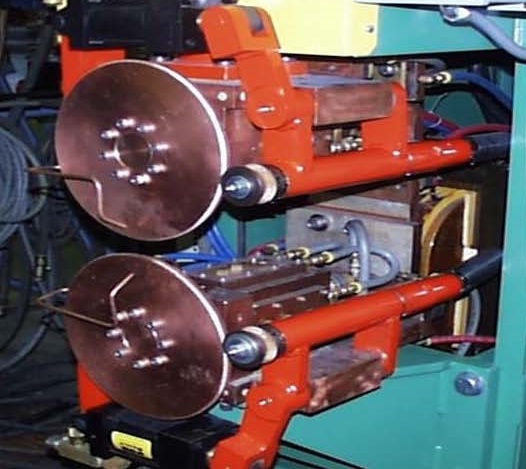A seam welding shaft is generally a large diameter copper alloy bar precision machined to conduct the current deliver force and rotate during the seam welding operation. The shaft works hard under heavy duty cycles, currents and forces. The shaft operates in a housing which is filled with conductive grease and has current carrying shoes which ride on the shaft to deliver current. Eventually these conductors and the shaft wear and service is required.
Shaft wear is more common than breakage but is possible.

SEAM WELDER WITH KNURLERS
This author cannot offer a cause for a failure like that. A failure analysis of the broken shaft needs to be performed on the spot by the proper Metallurgical/Mechanical Engineering personnel.
The issue could have initiated from:
• Defective raw material
• Improper alloy
• Improper design
• Bad machining
• Failed lubrication
• Failed Cooling
• Broken fastener
• Old age
• Internal arcing
• Use beyond its design capability
There are many other items that would be looked at in a failure analysis that cannot be answered from this distance.
Reference: AWS J1.2 - Guide to Installation and Maintenance of Resistance Welding Machines

